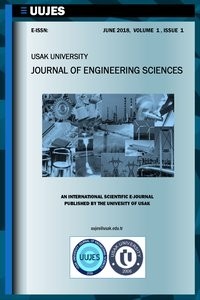Determination of Optimum Bitumen Content in Porous Asphalt Pavement by Different Methods
Determination of Optimum Bitumen Content in Porous Asphalt Pavement by Different Methods
Porous asphalt, Optimum bitumen content, Modified porous asphalt, Porous asphalt design, Polymers,
___
- [1] Hamzah, M. O., Hasan, M. M., & Van Bochove, G. (2012, June). Rational control parameters for determination of design binder content of porous asphalt. In 5th Eurasphalt & Eurobitume Congress.
- [2] Ruiz, A., Mixture Design, p. 309, 1997
- [3] Alvarez, A. E., Martin, A. E., Estakhri, C. K., Button, J. W., Glover, C. J., & Jung, S. H. (2006). Synthesis of Current Practice on the Design. Construction, and Maintenance of Porous Friction Courses.
- [4] Kandhal, P. S. (2002). Design, construction, and maintenance of open-graded asphalt friction courses. National Asphalt Pavement Association.
- [5] Watson, D. E., Ann Moore, K., Williams, K., & Allen Cooley Jr, L. (2003). Refinement of new-generation open-graded friction course mix design. Transportation Research Record, 1832(1), 78-85.
- [6] Watson, D. E., Cooley Jr, L. A., Ann Moore, K., & Williams, K. (2004). Laboratory performance testing of open-graded friction course mixtures. Transportation Research Record, 1891(1), 40-47.
- [7] Alvarez, A. E., Martin, A. E., & Estakhri, C. (2011). A review of mix design and evaluation research for permeable friction course mixtures. Construction and Building Materials, 25(3), 1159-1166.
- [8] Ma, X., Wang, H., & Zhou, P. (2020). Novel Gradation Design of Porous Asphalt Concrete with Balanced Functional and Structural Performances. Applied Sciences, 10(20), 7019.
- [9] Sengoz, B., & Isikyakar, G. (2008). Analysis of styrene-butadiene-styrene polymer modified bitumen using fluorescent microscopy and conventional test methods. Journal of hazardous materials, 150(2), 424-432.
- [10] Topal, A. (2010). Evaluation of the properties and microstructure of plastomeric polymer modified bitumens. Fuel Processing Technology, 91(1), 45-51.
- [11] Almusawi, A., Sengoz, B., & Topal, A. (2021). Evaluation of mechanical properties of different asphalt concrete types in relation with mixing and compaction temperatures. Construction and Building Materials, 268, 121140.
- [12] Ozdemir, D. K., Topal, A., McNally, T. (2021). Relationship between microstructure and phase morphology of SBS modified bitumen with processing parameters studied using atomic force microscopy. Construction and Building Materials, 268, 121061.
- [13] Kaya, D., Topal, A., Gupta, J., McNally, T. (2020). Aging effects on the composition and thermal properties of styrene-butadiene-styrene (SBS) modified bitumen. Construction and Building Materials, 235, 117450.
- Başlangıç: 2018
- Yayıncı: Uşak Üniversitesi
Determination of Optimum Bitumen Content in Porous Asphalt Pavement by Different Methods
Ahmet Buğra İBİŞ, Burak SENGOZ, Ali ALMUSAWİ, Derya KAYA ÖZDEMİR, Ali TOPAL
EVALUATION OF THE SEISMIC BEHAVIOR OF THE HISTORIC CLANDRAS BRIDGE
Comparison of Different Brands of Geodetic GNSS Receivers According to Horizontal Accuracies
CORROSIVE INFLUENCE OF VARIED SALT SOLUTIONS CONCENTRATION ON MILD STEEL
Wasiu AYOOLA, Muyideen BODUDE, Stephen DUROWAYE, Richard FALADE, Utiwe EZEKİEL, Olujide OYERİNDE
Nazife Gözde AYTER ARPACIOĞLU, Zekiye BAŞÇİFTÇİ
DEVELOPMENT OF A MODULAR BITTER LEAF WASHING AND JUICE EXTRACTION MACHINE
